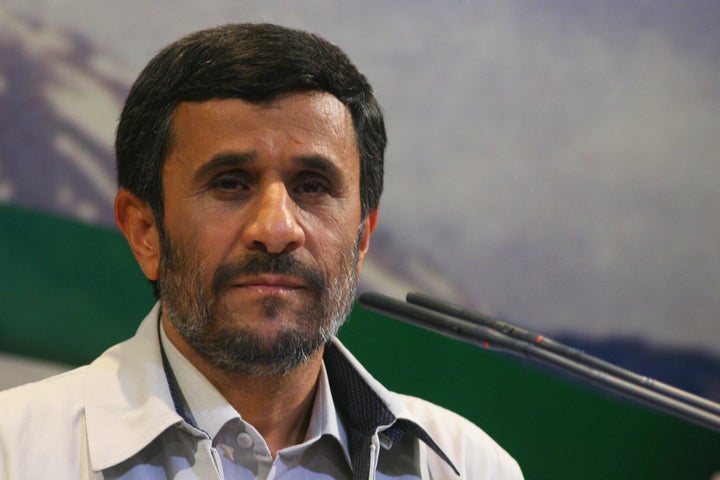
Iran claims its nuclear program is for peaceful purposes, but the majority of the rest of the world questions this assertion. And for good reason: A thorough assessment of the evidence shows that Iran's end goal is a nuclear weapons capability, not nuclear energy.
Before we get into evidence, though, it is first important to distinguish a nuclear weapon from a nuclear weapons capability. This distinction may not sound substantial, but it has tremendous technical and policy implications. On the one hand, a nuclear weapon means the end goal of the Iranian program is to actually build a physical bomb, complete with explosives package, fissile material, and casing -- perhaps even mated to a delivery vehicle. This is a tangible result, something we can see and touch. On the other hand, a nuclear weapons capability means the end goal of the Iranian nuclear program is to stop one step short of building the physical bomb. The necessary components are in place, but no actual weapon has been produced.
Iran seeks the latter -- a weapons capability -- and as a result is pursuing a nuclear hedging strategy. That is, Iran is shortening the ramp-up time it would need to produce a working bomb, just in case it ever believes it needs one. And there is evidence that it has conducted significant research and development in this space: The November 2011 IAEA Board of Governors report includes a hefty annex that details the weapons-specific research and development Iran has conducted in recent years. While the 2007 U.S. National Intelligence Estimate has concluded that Iran has suspended its progress in this space, there is ample evidence to demonstrate that Iran's leaders are interested in developing the kinds of components, technologies and knowledge necessary to construct a nuclear weapon, not develop nuclear energy.
Yet Iran consistently claims that nuclear weapons are a "grave sin" in Islam, and that it is impossible for the Islamic Republic of Iran to produce such weapons of death and destruction. Further, Iran's argument goes, in order to have a peaceful nuclear power program it needs to domestically produce enriched uranium. But this is a flimsy argument. A 2007 Nonproliferation Review article demonstrates that until a country has between five and twenty nuclear energy reactors (each one at or above 1,000 megawatts), it doesn't have the economic justification to invest in domestic uranium enrichment, since this technological capability requires very substantial investments that span years and often decades to bring to fruition.
The economies of scale simply don't exist in the Iranian case: Iran only has one power-generating nuclear reactor, at Bushehr. This one facility took 35 years to build, and only with significant international assistance. It was connected to the Iranian power grid just recently, in September 2011, and will finally become fully operational this summer. Therefore, the claim by Iran that it intends to have seven operational reactors by 2025 seems dubious.
In addition, if Iran's end objective was to develop nuclear energy, not nuclear weapons, it would not be making some very suspicious moves in recent times. First, Iran has tripled its total uranium output, which suggests it is stockpiling this material for future use, and ostensibly not in a power program due to the considerations mentioned above. Second, Iran has increased its enrichment levels to 19.75 percent, which is well above the level needed for nuclear power purposes but just below the internationally defined threshold of what constitutes high enriched uranium (HEU), which is 20 percent. Remember, nuclear energy-generating reactors, including the one at Bushehr, typically need 3-5 percent enriched uranium, known as low-enriched uranium (LEU), and nothing more than that.
The explanation given by Iran for producing this 19.75 percent enriched uranium is that it intends to use it for the Tehran Research Reactor, which currently can accept uranium enriched to higher levels for research purposes and/or to create isotopes used in medical applications. But if this were indeed the case, Iran could and should have accepted any one of the three multilateral fuel supply arrangements proposed in the past five years. Yet it has rejected them all, insisting ad nauseam that it has the right to produce its own uranium -- and while this is legally true, Iran is not acting in good faith with respect to those rights.
When looking at the Iranian nuclear program, rhetoric does not match action on all counts. Iran's end goal is not nuclear energy, but a weapons capability. To be sure, this piece is not intended to advocate any kind of military action against Iran, but rather to provide an objective assessment of Iran's intentions. Only by taking a clear-eyed view of Iran can the international community move forward with Iran in dealing with its nuclear weapons ambitions.
